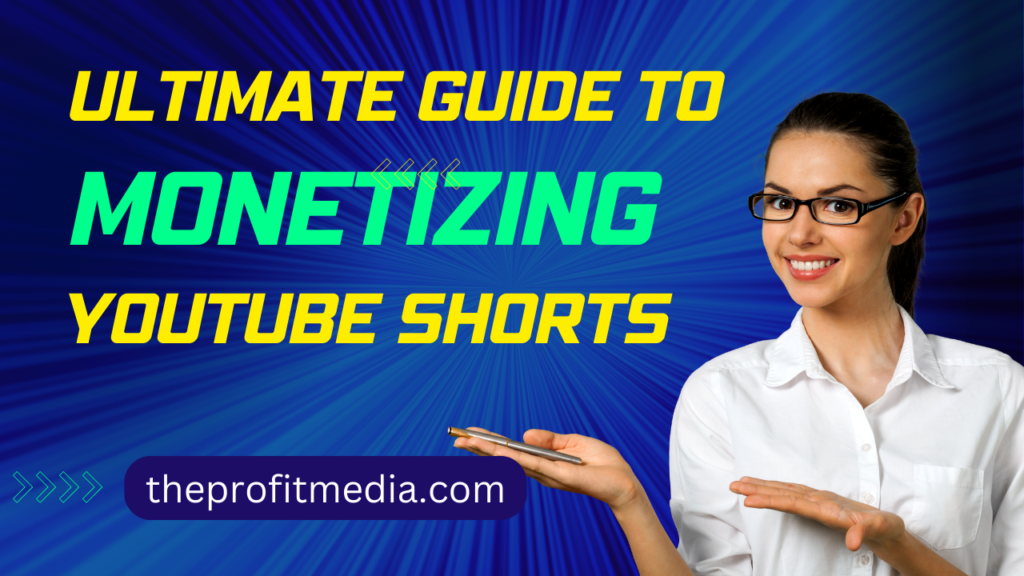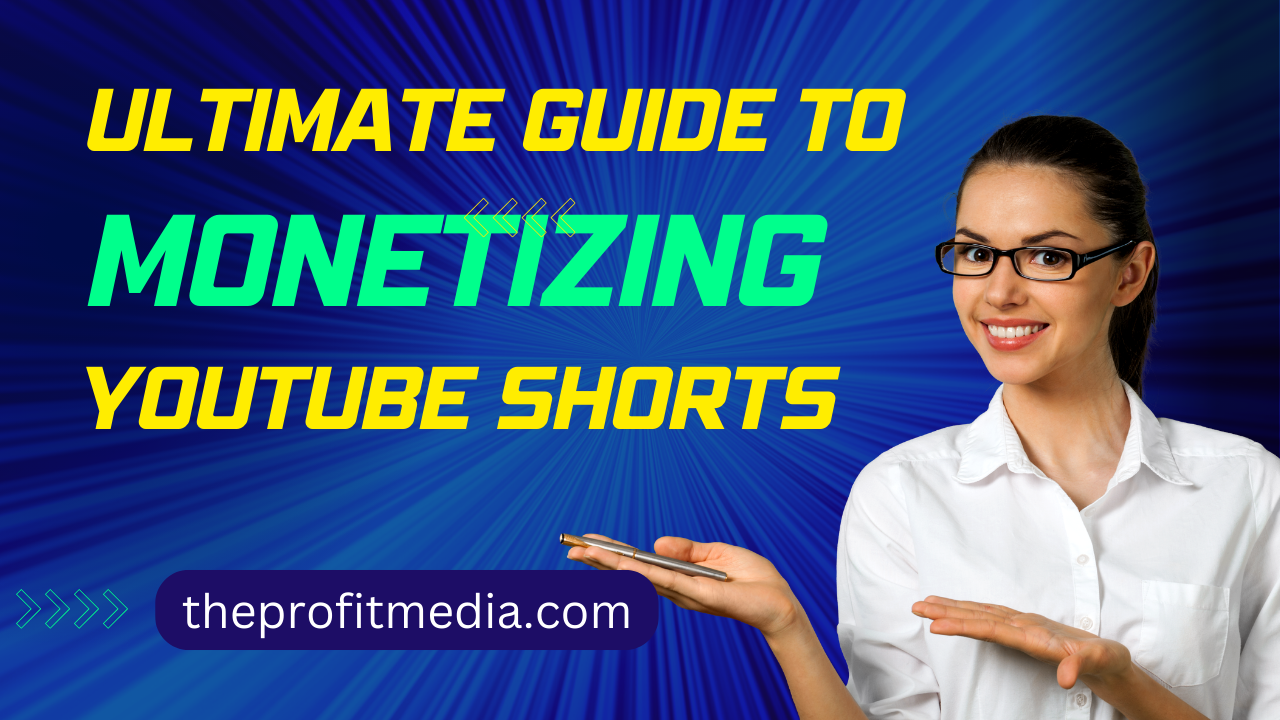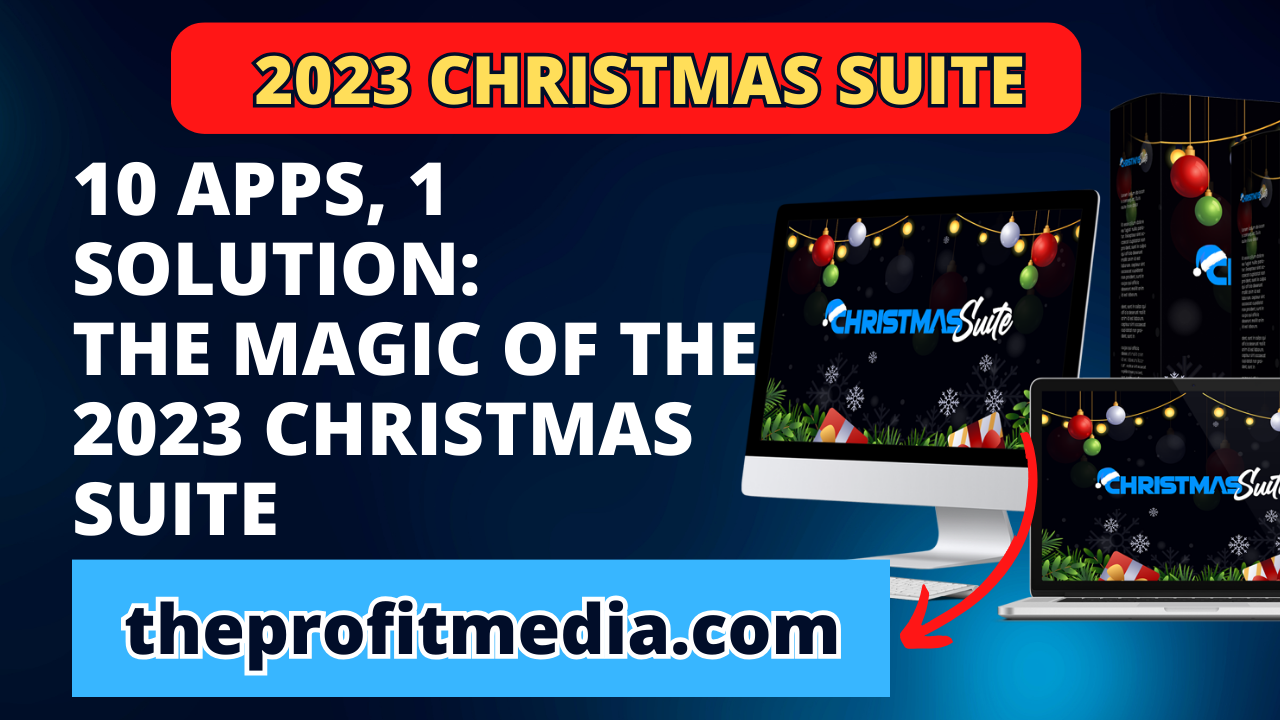YouTube Shorts has emerged as a dynamic platform for creators to share short, engaging videos with a massive audience. As its popularity continues to soar, the question on many creators’ minds is how to turn these Shorts into a source of income. In this comprehensive guide, we’ll explore various strategies for monetizing your YouTube Shorts in 2023 and offer you the insights and tools needed to unlock the earning potential of short-form video content.
Proven Way to Make Money Online – Watch this FREE Video to START >>

1. Ad Revenue: Enable Ads for Your Shorts
One of the most straightforward ways to monetize your YouTube Shorts is through ad revenue. Once your channel meets the eligibility criteria, join the YouTube Partner Program. This allows you to enable ads in and around your Shorts. You’ll earn a share of the revenue generated from these ads as your Shorts gain popularity.
2. Sponsorships and Brand Collaborations: Partner with Companies
Collaborating with brands is a lucrative option for monetization. Many companies are eager to tap into the reach of YouTube Shorts. They may sponsor your content, offer compensation, or provide products in exchange for promoting their brand to your audience. Ensure that the brand aligns with your content and values to maintain authenticity.
3. Affiliate Marketing: Promote Products and Earn Commissions
Affiliate marketing is a popular method for monetizing YouTube Shorts. Partner with companies and promote their products or services through affiliate links in your video descriptions. You’ll earn a commission for every sale made through these links. Choose products that resonate with your audience and the content of your Shorts.
4. Merchandise and Online Stores: Sell Your Brand
If you’ve built a dedicated following, consider selling branded merchandise. This can include apparel, accessories, or niche-related items. Set up an online store or use third-party platforms to sell your merchandise. Branded products not only provide a source of income but also allow your audience to support your channel.
5. Online Courses and Educational Content: Share Your Expertise
If your YouTube Shorts feature educational or instructional content, consider creating and selling online courses, workshops, or educational materials. Use your Shorts to attract viewers to your more in-depth content. Sharing your expertise can be a valuable source of income.
6. Donations and Channel Memberships: Engage with Your Community
YouTube Shorts now allows you to enable channel memberships and receive direct donations from your viewers. Encourage your dedicated fans to support your channel through channel memberships and direct donations. In return, offer exclusive perks such as early access to content, behind-the-scenes insights, or personalized shoutouts.
7. Licensing Your Content: Monetize Your Originality
If your YouTube Shorts feature unique and original content, consider licensing it to media outlets, film producers, or other creators. Licensing can be a significant source of income, especially if your content has broad appeal. Protect your intellectual property rights and negotiate fair licensing terms.
8. Crowdfunding: Harness the Power of Your Fanbase
Crowdfunding platforms like Patreon and Kickstarter offer creators a direct source of income from their audience. You can offer various reward tiers to your supporters, such as exclusive content, merchandise, or personalized interactions. Building a community of supporters can be an excellent way to fund your content creation.
In conclusion, monetizing YouTube Shorts in 2023 offers a world of opportunities for content creators. By exploring these strategies and finding the ones that best align with your content and audience, you can turn your passion for creating short-form videos into a thriving source of income. As you embark on this monetization journey, remember that authenticity and engagement with your viewers are key to success. Ultimately, the world of YouTube Shorts offers not just a platform for creativity but a pathway to financial reward as well.
Proven Way to Make Money Online – Watch this FREE Video to START >>
1. Ad Revenue: Enable Ads for Your Shorts
Monetizing your YouTube Shorts through ad revenue is a straightforward and accessible method for content creators looking to generate income. In this step-by-step guide, we’ll walk you through the process of enabling ads for your Shorts, allowing you to start earning money from your short-form video content on YouTube.
Step 1: Join the YouTube Partner Program (YPP)
Before you can start earning ad revenue on your YouTube Shorts, you need to meet the eligibility requirements for the YouTube Partner Program (YPP). Here are the primary criteria:
– Your channel must have at least 1,000 subscribers.
– Your channel needs a minimum of 4,000 valid public watch hours within the last 12 months.
– You must comply with YouTube’s policies and community guidelines.
– You need an AdSense account linked to your YouTube channel.
To check your eligibility and apply for YPP, follow these steps:
1. Sign in to your YouTube account.
2. Click on your profile picture in the top-right corner and go to YouTube Studio.
3. In YouTube Studio, click on the “Monetization” tab on the left sidebar.
4. Follow the prompts to review and accept the terms of the YouTube Partner Program.
Step 2: Enable Monetization for Your Shorts
Once you’ve been accepted into the YPP, you can start monetizing your Shorts:
1. Access YouTube Studio by clicking on your profile picture and selecting “YouTube Studio.”
2. In YouTube Studio, click on “Videos” on the left sidebar to see a list of your uploaded videos, including your Shorts.
3. Find the specific Short you want to monetize and click on it.
4. In the video details, click on the “Monetization” tab.
5. Toggle on the “Monetize with ads” option to enable ads for that particular Short.
Step 3: Follow YouTube’s Monetization Guidelines
To maintain monetization and adhere to YouTube’s guidelines, keep the following in mind:
– Ensure your content complies with YouTube’s policies and community guidelines.
– Avoid using copyrighted material without proper permission or fair use justification.
– Continually engage with your audience and foster a positive community.
Step 4: Track Your Earnings
After enabling ads for your Shorts, you can track your earnings through your YouTube Studio dashboard. The revenue generated from ads in and around your Shorts will be visible in your AdSense account, which is linked to your YouTube channel. Payments are typically made once your earnings reach a specific threshold.
Step 5: Maximize Earnings
To optimize your ad revenue from YouTube Shorts, consider the following tips:
– Create high-quality, engaging Shorts to attract more views and watch time.
– Experiment with different types of content and cater to your target audience.
– Promote your Shorts on other social media platforms to increase their visibility.
– Stay updated on YouTube’s monetization policies and algorithm changes.
Monetizing your YouTube Shorts with ad revenue is a fantastic way to start generating income from your creative content. As you continue to create and share compelling Shorts, your earnings have the potential to grow, making this method an excellent starting point for content creators.
Proven Way to Make Money Online – Watch this FREE Video to START >>
2. Sponsorships and Brand Collaborations: Partner with Companies
Partnering with companies through sponsorships and brand collaborations is a lucrative avenue for monetizing your YouTube Shorts. These collaborations can provide both financial rewards and opportunities to promote products or services that align with your content and audience. In this guide, we’ll explore how to effectively secure sponsorships and brand collaborations for your Shorts.
Step 1: Define Your Niche and Audience
Before seeking sponsorships, it’s crucial to have a clear understanding of your content niche and target audience. Define your niche – whether it’s fashion, gaming, cooking, or any other area – and identify the specific interests and demographics of your viewers. Brands are more likely to partner with creators whose content resonates with their target market.
Step 2: Build a Strong Online Presence
To attract brand partnerships, you need a solid online presence. This includes a well-maintained YouTube channel with a consistent posting schedule and engaged viewers. Ensure your Shorts are high-quality and showcase your unique style and personality.
Step 3: Reach Out to Brands
Approaching brands directly or through influencer marketing platforms can be effective in securing sponsorships. Here’s how to do it:
1. Research Brands: Identify companies that align with your content and audience. Look for businesses with products or services that you genuinely believe in and can authentically endorse.
2. Create a Pitch: Craft a compelling pitch that highlights your channel’s strengths, audience demographics, and the value you can provide to the brand. Explain why you’re an ideal fit for a partnership.
3. Contact Brands: Reach out to the brands through email or their preferred communication channel. Be professional and concise in your communication.
Step 4: Negotiate Terms and Compensation
When a brand expresses interest, you’ll need to negotiate terms, including compensation. Consider the following:
– Compensation: Discuss whether you’ll be paid a flat fee, receive free products, or earn a commission based on sales generated from your promotional content.
– Deliverables: Define what the brand expects from you. This could include creating a dedicated Shorts video, promoting their product in your video description, or sharing content on your social media.
– Disclosure: Ensure that you and the brand are in agreement about how to disclose the sponsorship to your viewers, as transparency is vital.
Step 5: Create Authentic and Engaging Content
Once you’ve secured a sponsorship, it’s essential to create authentic and engaging Shorts that seamlessly incorporate the brand’s product or service. Be transparent with your audience about the partnership and emphasize the value the product or service brings to them.
Step 6: Promote the Collaboration
Maximize the partnership by promoting the collaboration across your social media channels and other content. Highlight the partnership in the video description and pin a comment that provides more information about the brand and its offerings.
Step 7: Measure and Report on Results
After the sponsored Shorts is published, analyze its performance. Measure metrics such as views, engagement, and any impact on brand-specific goals like product sales. Sharing this data with the brand demonstrates the effectiveness of the collaboration.
Step 8: Build Lasting Relationships
A successful sponsorship can lead to long-term partnerships and collaborations with brands. If the collaboration is fruitful, maintain a positive relationship with the company, which may lead to more opportunities in the future.
In conclusion, sponsorships and brand collaborations can be a valuable source of income for creators of YouTube Shorts. By carefully selecting brands that align with your content and audience, creating authentic and engaging content, and fostering long-term relationships, you can not only monetize your Shorts but also enhance your channel’s credibility and reach.
Proven Way to Make Money Online – Watch this FREE Video to START >>
3. Affiliate Marketing: Promote Products and Earn Commissions
Affiliate marketing is a powerful method for creators to monetize their YouTube Shorts by promoting products or services and earning commissions for sales generated through their affiliate links. In this step-by-step guide, we’ll walk you through the process of getting started with affiliate marketing on YouTube Shorts.
Step 1: Find Affiliate Programs and Products
Begin by identifying affiliate programs and products that align with your content and appeal to your audience. Some popular affiliate programs include Amazon Associates, ClickBank, and ShareASale. Research the affiliate products and services within your niche that are likely to resonate with your viewers.
Step 2: Join Affiliate Programs
Sign up for the affiliate programs you’ve chosen. These programs often have simple registration processes, and approval is typically swift. Once accepted, you’ll gain access to a unique affiliate ID or affiliate links that track your referrals.
Step 3: Create Compelling Short-Form Content
Develop engaging YouTube Shorts that naturally incorporate the affiliate products or services. Your Shorts should provide value to your audience and highlight how the promoted product or service can benefit them. It’s essential to maintain authenticity and transparency in your content to build trust with your viewers.
Step 4: Insert Affiliate Links
In your YouTube Shorts video description, include your affiliate links for the products or services you’re promoting. When viewers click on these links and make purchases, you’ll earn a commission on the sales generated. Make sure your audience is aware that these are affiliate links to maintain transparency.
Step 5: Disclose Your Affiliate Relationships
Transparency is key in affiliate marketing. Disclose your affiliate relationships to your viewers, either verbally in the video or in the video description. Being honest about your financial interests in the products you promote helps maintain trust with your audience.
Step 6: Optimize Keywords and SEO
To attract more potential buyers, optimize your video titles, descriptions, and tags with relevant keywords. This will improve your Shorts’ visibility in YouTube’s search results and increase the likelihood of attracting viewers interested in the products you’re promoting.
Step 7: Track Your Performance
Most affiliate programs provide tracking tools that allow you to monitor the performance of your affiliate links. Keep a close eye on metrics like clicks, conversions, and earnings to assess the effectiveness of your affiliate marketing efforts.
Step 8: Experiment and Adjust
Experiment with different products, strategies, and content styles to find what works best for your audience. Analyze the performance data and adjust your approach accordingly. Over time, you’ll refine your affiliate marketing strategy to maximize your earnings.
Step 9: Follow FTC Guidelines
Ensure that you comply with the Federal Trade Commission (FTC) guidelines regarding affiliate marketing disclosure. These guidelines require you to clearly and conspicuously disclose your affiliate relationships to your audience.
Step 10: Build Trust and Credibility
Maintain trust and credibility with your viewers by promoting products that genuinely offer value and by providing honest, unbiased reviews. Your audience’s trust is crucial for long-term success in affiliate marketing.
Step 11: Diversify and Scale
As you gain experience and see success with affiliate marketing, consider diversifying your affiliate partnerships and scaling your efforts. Explore additional affiliate programs and products, and create more Shorts to expand your affiliate marketing income.
By following these steps, you can effectively monetize your YouTube Shorts through affiliate marketing. Remember that consistency, authenticity, and a focus on providing value to your audience are key to building a successful affiliate marketing strategy.
Proven Way to Make Money Online – Watch this FREE Video to START >>
4. Merchandise and Online Stores: Sell Your Brand
Selling branded merchandise through online stores can be a lucrative way to monetize your YouTube Shorts. It not only provides an additional source of income but also strengthens your brand and fosters a deeper connection with your audience. In this comprehensive guide, we’ll walk you through the process of creating and promoting merchandise for your YouTube Shorts.
Step 1: Define Your Brand and Audience
Before diving into merchandise sales, it’s crucial to have a well-defined brand and a deep understanding of your audience. Your brand represents your unique identity and style, and it should align with the interests and demographics of your viewers.
Step 2: Design Branded Merchandise
Consider creating a range of branded merchandise that resonates with your audience. Options may include apparel (T-shirts, hoodies), accessories (mugs, phone cases), or niche-specific items related to your content. You can design these products yourself or hire a designer.
Step 3: Set Up an Online Store
There are several platforms where you can set up an online store to sell your merchandise. Popular options include:
– Merch by Amazon: An on-demand printing service that handles production, shipping, and customer service.
– Printful: An e-commerce platform that integrates with multiple online marketplaces.
– Shopify: A comprehensive e-commerce platform that allows you to create a customized online store.
– Teepublic: A platform specializing in custom merchandise, including clothing and accessories.
Choose a platform that suits your needs and provides the features you require to sell your branded merchandise effectively.
Step 4: Create High-Quality Product Listings
When adding products to your online store, ensure your listings are high-quality and engaging. Use professional images and write compelling product descriptions. Highlight the unique selling points of your merchandise, such as the quality, design, or exclusivity.
Step 5: Promote Your Merchandise in YouTube Shorts
Promote your merchandise in your YouTube Shorts to maximize exposure. Mention your products in your Shorts videos and provide direct links in the video description. Consider running Shorts dedicated to showcasing your merchandise, such as “merch drops.”
Step 6: Utilize Social Media and Other Platforms
Leverage your social media presence and other platforms to promote your merchandise. Share images, stories, and posts showcasing your branded items. Consider using Instagram, Twitter, Facebook, and other platforms to reach a wider audience.
Step 7: Offer Special Promotions and Discounts
Encourage viewers to purchase your merchandise by offering special promotions and discounts. Limited-time offers, bundle deals, or exclusive items can create a sense of urgency and increase sales.
Step 8: Engage with Your Audience
Engage with your audience to build a loyal customer base. Respond to comments, answer questions about your merchandise, and show appreciation for your supporters. Building a community around your brand can lead to repeat purchases and word-of-mouth promotion.
Step 9: Analyze Performance and Adjust
Monitor the performance of your merchandise sales through your chosen online store platform. Analyze sales data, customer feedback, and marketing efforts. Use this information to make adjustments and refine your merchandise strategy.
Step 10: Expand Your Product Line
As your merchandise sales grow, consider expanding your product line with new designs and items. Keep your offerings fresh and appealing to maintain the interest of your audience.
In conclusion, selling branded merchandise through online stores is an effective way to monetize your YouTube Shorts while strengthening your brand identity. By following these steps and consistently promoting your merchandise in your Shorts and on other platforms, you can create an additional revenue stream and build a loyal fan base. Remember that the quality and appeal of your merchandise, as well as your engagement with your audience, are key to your success.
Proven Way to Make Money Online – Watch this FREE Video to START >>
5. Online Courses and Educational Content: Share Your Expertise
Sharing your expertise through online courses can be a profitable way to monetize your YouTube Shorts. If your Shorts offer valuable educational content, this guide will walk you through the process of creating and selling online courses to your engaged audience.
Step 1: Identify Your Area of Expertise
Begin by identifying your specific area of expertise that aligns with your YouTube Shorts content. Your expertise can cover a wide range of topics, such as cooking, technology, fitness, language learning, or any subject you’re passionate about and knowledgeable in.
Step 2: Plan Your Course Content
Outline the content for your online course. Break it down into manageable modules or lessons, and ensure it provides a structured learning experience for your students. Your course should be comprehensive and engaging, offering value to your audience.
Step 3: Choose an Online Course Platform
Select an online course platform to host and sell your course. Popular options include:
– Udemy: A widely recognized online learning marketplace where you can publish and sell your courses.
– Teachable: A platform that allows you to create and customize your online school with various features.
– Thinkific: An all-in-one platform that provides tools for creating, marketing, and selling online courses.
– LearnWorlds: A platform that focuses on building custom-branded online schools.
Compare the features, pricing, and user-friendliness of these platforms to find the one that best suits your needs.
Step 4: Create Your Course
Develop your course content according to your outline. Utilize various media elements, such as video lessons, written materials, quizzes, and assignments, to enhance the learning experience. High-quality video lessons are essential for courses related to YouTube Shorts content.
Step 5: Set a Price for Your Course
Determine the pricing for your online course. Consider factors like the course’s value, your expertise, and your target audience’s willingness to pay. You can offer different pricing tiers, such as basic and premium, to cater to a broader range of students.
Step 6: Promote Your Course in YouTube Shorts
Use your YouTube Shorts to promote your online course. Create Shorts that offer a glimpse of the valuable content your course provides. Highlight key takeaways and benefits to entice your audience. Include links in your video descriptions, encouraging viewers to explore your course.
Step 7: Engage with Your Students
As students enroll in your online course, engage with them through discussion boards, Q&A sessions, and feedback on assignments. Creating a sense of community and providing support can lead to positive reviews and recommendations.
Step 8: Market Your Course Beyond YouTube
Promote your course through various marketing channels, including social media, your website, email newsletters, and partnerships with other content creators. A well-rounded marketing strategy can help you reach a broader audience.
Step 9: Collect and Analyze Feedback
Collect feedback from your course participants to understand their needs and improve your offerings. Use this feedback to make necessary updates to your course materials.
Step 10: Expand Your Course Offerings
As you gain experience in offering online courses, consider expanding your course catalog. You can create more advanced courses, offer specialized workshops, or provide ongoing support and resources to your students.
In conclusion, monetizing your YouTube Shorts through online courses and educational content is an excellent way to share your expertise and generate income. By following these steps, consistently promoting your courses, and providing valuable content to your audience, you can create a thriving source of revenue while educating and empowering your viewers. Remember that building a strong online educational brand requires dedication and a commitment to delivering high-quality learning experiences.
Proven Way to Make Money Online – Watch this FREE Video to START >>
6. Donations and Channel Memberships: Engage with Your Community
Engaging with your community through donations and channel memberships is an effective way to monetize your YouTube Shorts and build a dedicated fanbase. This guide will walk you through the process of enabling donations and channel memberships, allowing you to create a sustainable income stream while connecting with your loyal viewers.
Step 1: Enable Channel Memberships
To offer channel memberships on YouTube, you must meet specific eligibility criteria, including having at least 30,000 subscribers. If your channel qualifies, follow these steps to enable channel memberships:
1. Sign in to your YouTube account.
2. Go to YouTube Studio by clicking on your profile picture.
3. In YouTube Studio, click on “Monetization” in the left sidebar.
4. Select “Channel memberships.”
5. Follow the prompts to set up your channel memberships, including defining pricing tiers and member perks.
Step 2: Offer Exclusive Perks
Channel memberships allow you to offer exclusive perks to your paying members. Create a variety of perks to cater to different membership levels. Examples of perks include:
– Early access to your YouTube Shorts and other content.
– Members-only live chats or Q&A sessions.
– Behind-the-scenes insights and updates.
– Custom badges and emojis for members to use in live chat and comments.
– Members-only community posts and polls.
Design your perks to add value and engagement for your members.
Step 3: Promote Channel Memberships
Promote your channel memberships within your YouTube Shorts and on other platforms. In your Shorts videos, mention the benefits of becoming a channel member and provide links to your membership page. Use other social media channels, email newsletters, and your YouTube community tab to encourage sign-ups.
Step 4: Interact with Your Members
Engage with your channel members to create a sense of community and appreciation. Respond to their comments, give special recognition to long-term members, and fulfill the perks you’ve promised. Building a close-knit community is essential for retaining members.
Step 5: Enable Donations and Super Chat
Donations and Super Chat are features that allow viewers to make direct monetary contributions during live streams or premiere events. To enable these features:
1. Go to your YouTube Studio.
2. Click on “Monetization” in the left sidebar.
3. Select “Supers.”
Once enabled, you can receive donations and Super Chat contributions during live events, offering viewers an additional way to support your channel.
Step 6: Engage with Donors and Super Chat Contributors
Show your appreciation to donors and Super Chat contributors during live events. Acknowledge their contributions, answer their questions, or offer shoutouts. This interaction can encourage more donations and support from your audience.
Step 7: Create Special Events and Content
Consider hosting special events or creating unique content exclusively for your channel members and donors. These can include members-only live streams, Q&A sessions, or early access to new Shorts. These exclusive offerings enhance the value of channel memberships and donations.
Step 8: Analyze and Adapt
Regularly review the performance of your channel memberships, donations, and Super Chat. Pay attention to which perks and events resonate most with your audience and make adjustments based on viewer feedback and engagement data.
In conclusion, engaging with your community through channel memberships and donations is a powerful way to monetize your YouTube Shorts while nurturing a dedicated fanbase. By following these steps, creating valuable perks, and consistently connecting with your viewers, you can develop a sustainable income source while building a thriving online community. Remember that fostering a sense of belonging and appreciation is key to long-term success in this monetization approach.
Proven Way to Make Money Online – Watch this FREE Video to START >>
7. Licensing Your Content: Monetize Your Originality
If your YouTube Shorts feature unique and original content, you have the potential to monetize it by licensing it to media outlets, film producers, or other creators. In this comprehensive guide, we’ll walk you through the process of licensing your original content, allowing you to turn your creative work into a significant source of income.
Step 1: Understand Licensing and Copyright
Before diving into licensing your content, it’s essential to have a good grasp of licensing and copyright laws. Licensing involves granting specific rights to others while retaining ownership of your content. Ensure that your content is original and doesn’t infringe on any copyrights.
Step 2: Identify Marketable Content
Determine which of your YouTube Shorts have the potential to be licensed. Content that’s unique, visually compelling, or fits a specific niche is often more attractive to potential buyers.
Step 3: Create a Portfolio and Demo Reel
Compile your best Shorts into a portfolio or demo reel that showcases your original content. This reel should highlight your style, skills, and the range of content you can offer to potential licensors.
Step 4: Research Potential Buyers
Identify potential buyers who might be interested in licensing your content. These buyers could include media outlets, filmmakers, advertising agencies, or other content creators.
Step 5: Reach Out to Potential Buyers
Contact potential buyers through email, social media, or industry-specific platforms. Introduce yourself and your content, and express your interest in licensing your YouTube Shorts. Be professional and clear in your communication.
Step 6: Negotiate Licensing Agreements
When a potential buyer expresses interest, negotiate the terms of the licensing agreement. Consider factors such as:
– Exclusive or non-exclusive rights: Determine whether the buyer wants exclusive use of your content or if you can license it to multiple parties.
– Duration and territory: Specify the length of the licensing agreement and the geographical areas where your content can be used.
– Compensation: Agree on the compensation you’ll receive for licensing your content, which can be a one-time payment or royalties based on usage.
Step 7: Protect Your Rights
Before finalizing any licensing agreements, ensure you understand how your content will be used and the rights you retain. If you’re licensing exclusive rights, make sure you’re compensated accordingly.
Step 8: Deliver Your Content
Once an agreement is reached, provide the buyer with the necessary files or access to your content as stipulated in the contract.
Step 9: Promote Your Licensed Content
Promote your licensed content on your YouTube channel and other platforms, if allowed by the licensing agreement. Highlight your achievement in licensing your Shorts, which can enhance your credibility and attract future buyers.
Step 10: Maintain Documentation
Keep records of all licensing agreements, communications with buyers, and any legal documents to protect your interests and ensure you’re compensated correctly.
In conclusion, licensing your original YouTube Shorts content is an excellent way to monetize your creativity and expand your income streams. By following these steps, reaching out to potential buyers, and negotiating fair licensing agreements, you can turn your original content into a significant source of income while maintaining your ownership and creative control.
Proven Way to Make Money Online – Watch this FREE Video to START >>
8. Crowdfunding: Harness the Power of Your Fanbase
Crowdfunding offers a powerful way to monetize your YouTube Shorts by harnessing the support of your dedicated fanbase. Whether you’re looking to fund specific projects or secure a steady income, this guide will help you navigate the world of crowdfunding effectively.
Step 1: Choose the Right Crowdfunding Platform
Select a crowdfunding platform that aligns with your goals and audience. Popular options include:
– Patreon: Ideal for ongoing support, where fans can become patrons by pledging a monthly amount in exchange for exclusive content and rewards.
– Kickstarter: Great for one-time projects or product launches, where backers pledge money to help you reach a specific funding goal.
– Indiegogo: Offers a flexible funding model, allowing you to keep funds even if you don’t reach your goal, making it suitable for various projects.
Step 2: Define Your Crowdfunding Goals
Determine what you aim to achieve with crowdfunding. Are you looking to fund a special project, sustain your content creation, or offer your audience exclusive perks in return for their support?
Step 3: Offer Valuable Rewards
Create enticing reward tiers that offer value to your supporters. These rewards could include exclusive access to content, early releases, personalized shoutouts, merchandise, or behind-the-scenes insights. Make your fans feel appreciated for their contributions.
Step 4: Set Clear Expectations
Clearly communicate your crowdfunding goals, how contributions will be used, and the benefits backers will receive. Transparency and honesty are essential to gain the trust of your fanbase.
Step 5: Promote Your Crowdfunding Campaign
Spread the word about your crowdfunding campaign through your YouTube Shorts, other social media platforms, and your website. Make sure your audience knows how to become supporters and what they’ll receive in return.
Step 6: Engage with Your Supporters
Build a strong connection with your backers by responding to their comments and messages. Create a sense of community and appreciation by acknowledging their contributions.
Step 7: Deliver on Promises
Fulfill your promises to your supporters, whether it’s delivering rewards, completing a project, or providing ongoing content. Meeting expectations is crucial for building trust and retaining supporters.
Step 8: Analyze and Adjust
Regularly assess the performance of your crowdfunding efforts. Analyze which rewards and engagement strategies work best and make adjustments accordingly. Crowdfunding is an evolving process, and understanding your audience’s preferences is key.
Step 9: Diversify Your Offerings
Consider offering a variety of crowdfunding options. Some creators use platforms like Patreon for ongoing support and Kickstarter for specific projects. Diversifying can help you cater to different types of supporters.
Step 10: Express Gratitude
Show gratitude and appreciation to your backers, whether through public acknowledgments, personalized thank-you messages, or special perks. A little gratitude goes a long way in retaining your crowdfunding supporters.
Proven Way to Make Money Online – Watch this FREE Video to START >>
In conclusion, crowdfunding empowers creators to monetize their YouTube Shorts by tapping into the support of their fanbase. By selecting the right platform, setting clear goals, providing valuable rewards, and maintaining transparency, you can establish a thriving crowdfunding community that helps sustain your content creation and fund exciting projects. Remember that building a strong bond with your supporters is essential for long-term success in crowdfunding.











